 W
WA self-driving car, also known as an autonomous vehicle, driverless car, or robotic car (robo-car), is a vehicle that is capable of sensing its environment and moving safely with little or no human input.
 W
WExperiments have been conducted on self-driving cars since at least the 1920s; promising trials took place in the 1950s and work has proceeded since then. The first self-sufficient and truly autonomous cars appeared in the 1980s, with Carnegie Mellon University's Navlab and ALV projects in 1984 and Mercedes-Benz and Bundeswehr University Munich's Eureka Prometheus Project in 1987. Since then, numerous major companies and research organizations have developed working autonomous vehicles including Mercedes-Benz, General Motors, Continental Automotive Systems, Autoliv Inc., Bosch, Nissan, Toyota, Audi, Volvo, Vislab from University of Parma, Oxford University and Google. In July 2013, Vislab demonstrated BRAiVE, a vehicle that moved autonomously on a mixed traffic route open to public traffic.
 W
WVehicular automation involves the use of mechatronics, artificial intelligence, and multi-agent systems to assist a vehicle's operator. These features and the vehicles employing them may be labeled as intelligent or smart. A vehicle using automation for difficult tasks, especially navigation, may be referred to as semi-autonomous. A vehicle relying solely on automation is consequently referred to as robotic or autonomous. After the invention of the integrated circuit, the sophistication of automation technology increased. Manufacturers and researchers subsequently added a variety of automated functions to automobiles and other vehicles. The technology involved in implementing autonomous vehicles is very expansive, ranging from technological improvements in the vehicle itself to the environment and objects around the vehicle. As the use of automated vehicles increases, they are becoming more influential in human lives. Although automated vehicles bring various benefits, they also come with various concerns. Also, there are still technological challenges that need to be overcome in order to make vehicular automation robust and scalable.
 W
WThe American Center for Mobility (ACM) is a 500-acre (200 ha) vehicular automation research center and federally designated automated vehicle proving ground located in Ypsilanti Township, Michigan.
 W
WArgo AI is an autonomous driving technology company headquartered in Pittsburgh, Pennsylvania. The company was co-founded in 2016 by Bryan Salesky and Peter Rander, veterans of the Google and Uber automated driving programs. Argo AI is an independent company that builds the software, hardware, maps, and cloud-support infrastructure to power self-driving vehicles. Argo has two major investors: Ford Motor Co. (2017) and the Volkswagen Group (2020). Argo’s Self Driving System (SDS) technology will be incorporated into vehicles manufactured by the auto-makers through these partnerships.
 W
WAutomatic parking is an autonomous car-maneuvering system that moves a vehicle from a traffic lane into a parking spot to perform parallel, perpendicular, or angle parking. The automatic parking system aims to enhance the comfort and safety of driving in constrained environments where much attention and experience is required to steer the car. The parking maneuver is achieved by means of coordinated control of the steering angle and speed which takes into account the actual situation in the environment to ensure collision-free motion within the available space.
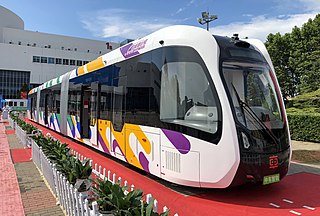 W
WAutonomous Rail Rapid Transit is a LiDAR guided articulated bus system for urban passenger transport. Developed by CRRC Zhuzhou Institute Co Ltd, it was unveiled in Zhuzhou in Hunan province on 2 June 2017.
 W
WThe Eureka PROMETHEUS Project was the largest R&D project ever in the field of driverless cars. It received €749,000,000 in funding from the EUREKA member states, and defined the state of the art of autonomous vehicles. Numerous universities and car manufacturers participated in this Pan-European project.
 W
WThe European Land-Robot Trial (ELROB) is a European event which demonstrates the abilities of modern robots.
 W
WThe Freightliner Inspiration is a prototype semi-trailer truck designed by Freightliner Trucks. The truck is the first autonomous commercial vehicle to be legally operated in the United States. There have been two units produced.
 W
WGeneral Motors EN-V is a 2-seat urban electric concept car jointly developed by Segway Inc. and General Motors that can be driven normally or operated autonomously.
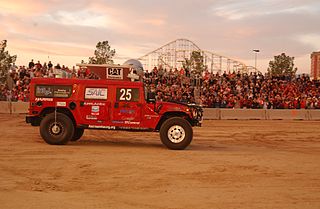 W
WH1ghlander is an autonomous vehicle. Created by Carnegie Mellon University's Red Team, it is a heavily modified 1999 HUMMER H1. It competed in the 2005 DARPA Grand Challenge.
 W
WIntelligent Parking Assist System (IPAS), also known as the Advanced Parking Guidance System (APGS) for Toyota models in the United States, is the first production automatic parking system developed by Toyota Motor Corporation in 1999 initially for the Japanese market hybrid Prius models and Lexus models. The technology assists drivers in parking their vehicle. On vehicles equipped with the IPAS, via an in-dash screen and button controls, the car can steer itself into a parking space with little input from the user. The first version of the system was deployed on the Prius Hybrid sold in Japan in 2003. In 2006, an upgraded version debuted for the first time outside Japan on the Lexus LS luxury sedan, which featured the automatic parking technology among other brand new inventions from Toyota. In 2009, the system appeared on the third generation Prius sold in the U.S. In Asia and Europe, the parking technology is marketed as the Intelligent Park Assist System for both Lexus and Toyota models, while in the U.S. the Advanced Parking Guidance System name is only used for the Lexus system.
 W
WKar-go, is an autonomous delivery vehicle, designed and built by British company, Academy of Robotics Ltd, a UK company, registered in Wales. The vehicle uses self-drive / driverless car technology to drive itself to locations where it delivers packages autonomously.
 W
WKat-5 is an autonomous vehicle created by Team Gray, an organization comprising employees from The Gray Insurance Company and students from Tulane University's School of Engineering, for the 2005 DARPA Grand Challenge.
 W
WIn road-transport terminology, lane centering, also known as auto steer or autosteer, is an advanced driver-assistance system that keeps a road vehicle centered in the lane, relieving the driver of the task of steering. Lane centering is similar to lane departure warning, but rather than warn the driver, or bouncing the car away from the lane edge, it keeps the car centered in the lane. Together with adaptive cruise control (ACC), this feature may allow unassisted driving for some length of time.
 W
WMadeInGermany was a driverless car developed by the Freie Universität Berlin and AutoNOMOS Labs in 2011.
 W
WThe NIO EVE is a concept car by NIO, with a working prototype that was unveiled in SXSW 2017. The car is said to be an autonomous vehicle, but can be manually driven if chosen. NIO announced the car will be in production by 2020.
 W
WNuro is an American robotics company based in Mountain View, California and founded by Jiajun Zhu and Dave Ferguson. Nuro develops autonomous delivery vehicles, and was the first company to receive an autonomous exemption from the National Highway Traffic Safety Administration since its vehicles are designed to carry goods instead of humans. Its second generation self-driving vehicle is called R2, and is designed with no steering wheel, side view mirrors, or pedals.
 W
WNuTonomy was an MIT spin-off technology startup company that made software to build self-driving cars and autonomous mobile robots. The company was founded in 2013. In August 2016, it launched its robo-taxi service in Singapore. In October 2017, Delphi Automotive purchased the company, which then became part of the Motional autonomous driving joint venture between Aptiv and Hyundai Motor Group.
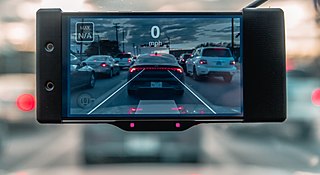 W
Wopenpilot is an open source, semi-automated driving system developed by comma.ai. openpilot operates as a replacement for OEM Advanced driver-assistance systems with the objective of improving visual perception and electromechanical actuator control. It allows users to modify their existing car with increased computing power, enhanced sensors, and continuously-updated driver assistance features that improve with user-submitted data.
 W
WOuster is an American lidar technology company headquartered in San Francisco, California. It builds high-resolution 3D lidar sensors for use in autonomous vehicles, robotics, drones, mapping, defense, and security systems.
 W
WIn transportation, platooning or flocking is a method for driving a group of vehicles together. It is meant to increase the capacity of roads via an automated highway system.
 W
WThe Renault Symbioz is an electric concept car built by Renault which was unveiled at the 2017 International Motor Show Germany.
 W
WA robotaxi, also known as a self-driving taxi or a driverless taxi, is an autonomous car operated for a ridesharing company.
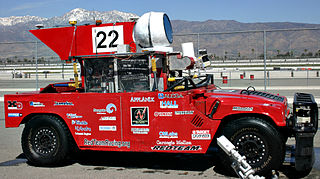 W
WSandstorm is an autonomous vehicle created by Carnegie Mellon University's Red Team, for the 2004 and 2005 DARPA Grand Challenge competition. It is a heavily modified 1986 M998 HMMWV.
 W
WSpirit of Berlin was a driverless car developed by the Freie Universität Berlin, Germany.
 W
WStadtpilot is a project of the Braunschweig University of Technology, Germany. Following the qualification for the DARPA Grand Challenge (2007) with the project CarOLO, this project aims to send the cars Henry and Leonie on a course through the Braunschweig inner city (Stadtring).
 W
WStanley is an autonomous car created by Stanford University's Stanford Racing Team in cooperation with the Volkswagen Electronics Research Laboratory (ERL). It won the 2005 DARPA Grand Challenge, earning the Stanford Racing Team the 2 million dollar prize.
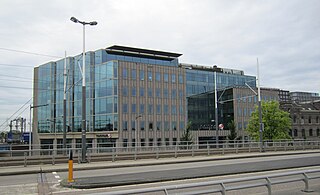 W
WTomTom N.V. is a Dutch multinational developer and creator of location technology and consumer electronics. Founded in 1991 and headquartered in Amsterdam, TomTom released its first generation of satellite navigation devices to market in 2004. As of 2019 the company has over 4,500 employees worldwide and operations in 29 countries throughout Europe, Asia-Pacific, and the Americas.
 W
WThe VaMP driverless car was one of the first truly autonomous cars along with its twin vehicle, the VITA-2. They were able to drive in heavy traffic for long distances without human intervention, using computer vision to recognize rapidly moving obstacles such as other cars, and automatically avoid and pass them.
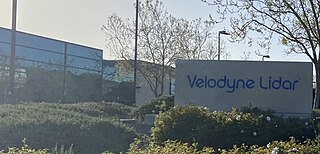 W
WVelodyne Lidar is a Silicon Valley-based lidar technology company, headquartered in San Jose, California. It spun off from Velodyne Acoustics. As of July 2020, the company has worked with more than 300 customers. Velodyne Lidar ships sensors to mobility industry customers for testing and commercial use in autonomous vehicles, advanced driver assistance systems, mapping, robotics, infrastructure and smart city applications.
 W
WThe Volkswagen I.D. Vizzion is a concept electric vehicle, part of Volkswagen's I.D. project. The firm is planning to sell a production version of the vehicle by 2022. It should be expected that some of the claims of the Vizzion Concept, such as the autonomous level 5 driving, will likely not make it the final 2022 production version of the vehicle. The Vizzion Concept is more likely to represent what driving in the year 2030 could be like.
 W
WWaymo LLC is an American autonomous driving technology development company. It is a subsidiary of Alphabet Inc, the parent company of Google. Waymo operates a commercial self-driving taxi service in the greater Phoenix, Arizona area called "Waymo One", with Chandler, Arizona fully mapped. In October 2020, the company expanded the service to the public, and it is the only self-driving commercial service that operates without safety backup drivers in the vehicle. Waymo also develops driving technology for use in other vehicles, including delivery vans and Class 8 tractor-trailers for delivery and logistics.
 W
WYandex self-driving car is a robotaxi project of the Russian-based internet corporation Yandex. The first driverless prototype launched in May 2017. As of 2018, functional service was launched in Russia with prototypes also being tested in Israel and the US.